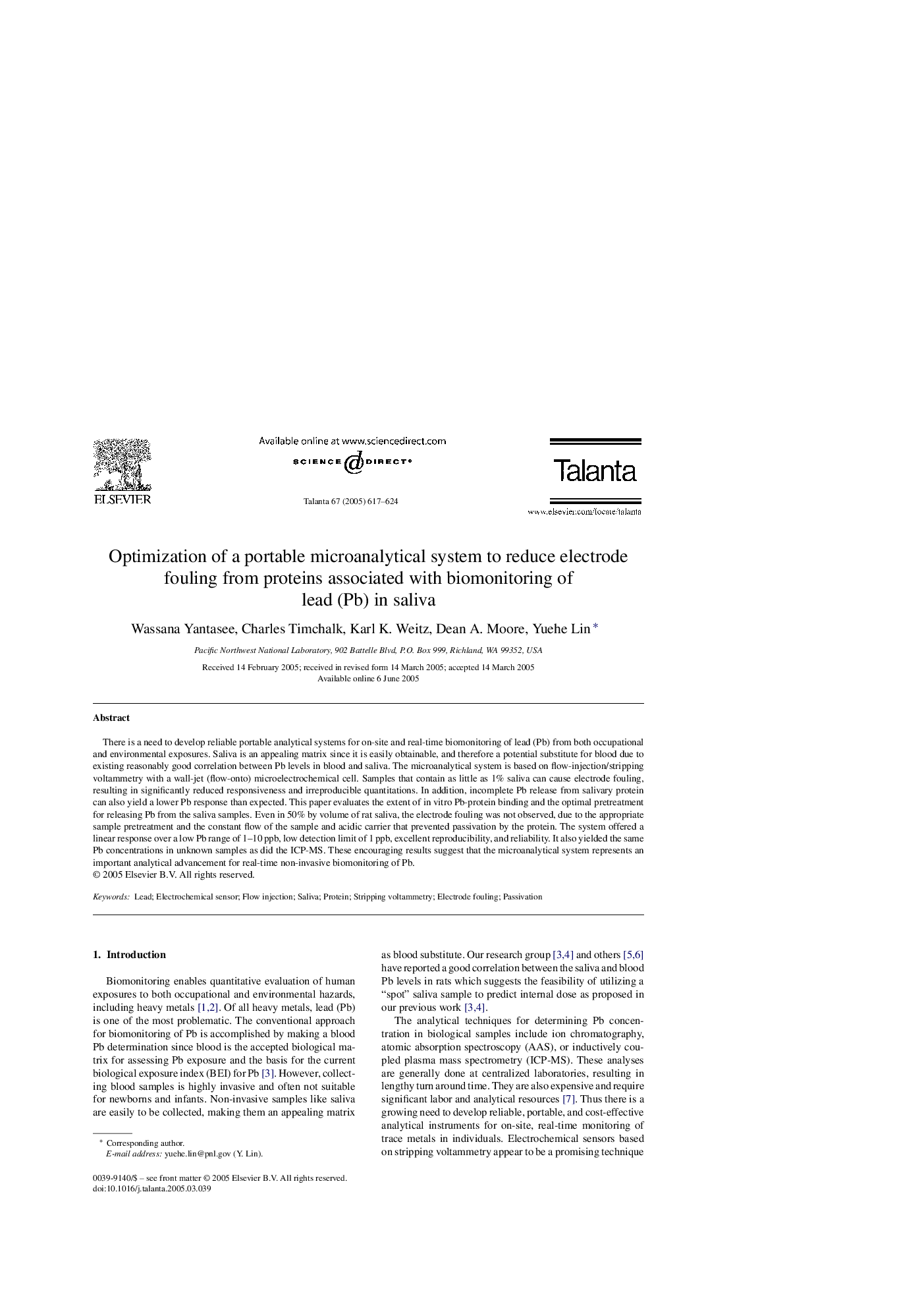| Article ID | Journal | Published Year | Pages | File Type |
|---|---|---|---|---|
| 10560643 | Talanta | 2005 | 8 Pages |
Abstract
There is a need to develop reliable portable analytical systems for on-site and real-time biomonitoring of lead (Pb) from both occupational and environmental exposures. Saliva is an appealing matrix since it is easily obtainable, and therefore a potential substitute for blood due to existing reasonably good correlation between Pb levels in blood and saliva. The microanalytical system is based on flow-injection/stripping voltammetry with a wall-jet (flow-onto) microelectrochemical cell. Samples that contain as little as 1% saliva can cause electrode fouling, resulting in significantly reduced responsiveness and irreproducible quantitations. In addition, incomplete Pb release from salivary protein can also yield a lower Pb response than expected. This paper evaluates the extent of in vitro Pb-protein binding and the optimal pretreatment for releasing Pb from the saliva samples. Even in 50% by volume of rat saliva, the electrode fouling was not observed, due to the appropriate sample pretreatment and the constant flow of the sample and acidic carrier that prevented passivation by the protein. The system offered a linear response over a low Pb range of 1-10Â ppb, low detection limit of 1Â ppb, excellent reproducibility, and reliability. It also yielded the same Pb concentrations in unknown samples as did the ICP-MS. These encouraging results suggest that the microanalytical system represents an important analytical advancement for real-time non-invasive biomonitoring of Pb.
Keywords
Related Topics
Physical Sciences and Engineering
Chemistry
Analytical Chemistry
Authors
Wassana Yantasee, Charles Timchalk, Karl K. Weitz, Dean A. Moore, Yuehe Lin,
